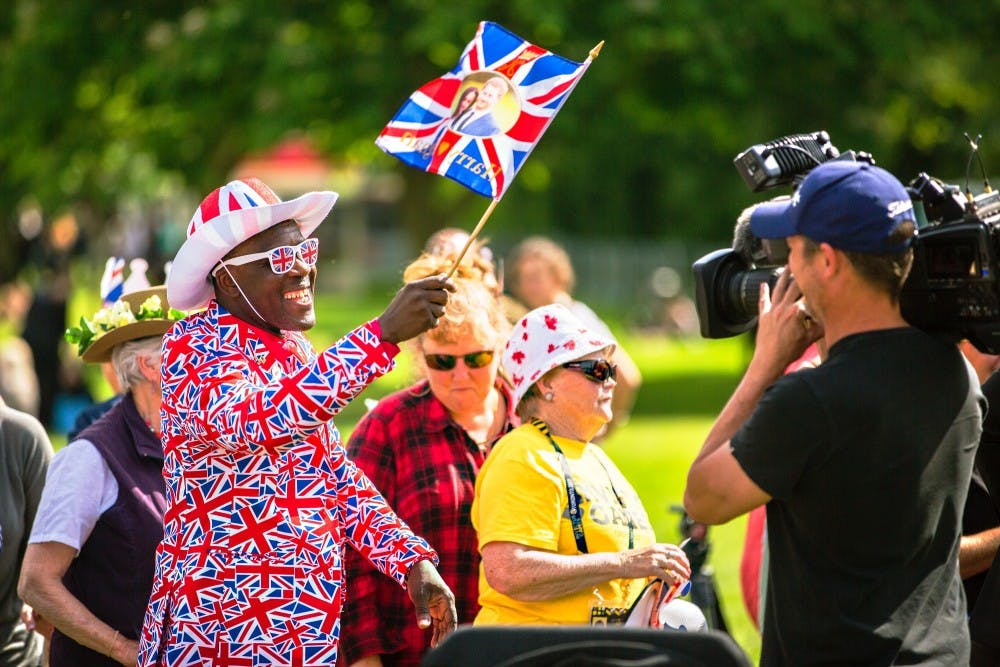The American obsession with British royal relationships is undeniable and arguably stronger than ever.
With the two most recent weddings of Prince Harry, Duke of Sussex, to American actress Meghan Markle, and Princess Eugenie to Jack Brooksbanks, royal love is fresh on the minds of many.
The American public—and younger generations in particular—have woken up at early morning hours to witness the historic royal weddings on television, often with festivities such as tea, scones, crowns, and British flag napkins in hand.
A few traditions for royal weddings that spectators watch for are bridal bouquets including a specific myrtle flower to leave at The Tomb of The Unknown Soldier and the groom wearing a military uniform.
At the forefront of the chatter, though, are the royal wedding dresses and the world of wonders behind them.
A few unique rules for royal wedding gowns: the monarch must give written permission on the final design, designers are recruited many months in advance and often produce the gown by hand, the gown must be white (no off-white, cream or blush) and the gown must have a conservative neckline.
The royal bride who established the white-only wedding dress tradition was Queen Victoria in 1840. Up until this point, royal women had worn wedding gowns that were pink, orange, and blue. She had such a strong desire to stand out in her then-atypical white gown that she requested all guests to wear darker colors so ensure her noticeability.
Now, it is a tradition followed by many around the world. Other staple pieces that originated from royal wedding dresses and are now frequently seen in other cultures’ bridal fashion include lace, lengthy trains and veils and long sleeves.
Interestingly, though, queens, princesses, and duchesses over time have worn wedding gowns that both reflect personal taste and iconic styles for their times.
This has demonstrated that the gowns are uniform in some degrees and unique in others and follow certain protocols while subtly breaking others.
Although seemingly silly to some, royal weddings are monumental moments and are significant to the public as the royals are symbols of stability and leadership that have stood the test of time.
When the royals highlight certain aspects of life and current events through personal clothing, it invites and inspires a sense of inspiration, creativity and patriotism across the globe. A prime example of this is Queen Elizabeth II’s wedding gown in 1947.
The gown was inspired by Botticelli’s painting Primavera and invoked a sense of “rebirth” to her people during the second World War. The pure silk gown was produced in China over the course of seven weeks and the Queen saved her ration cards to purchase the gown.
At the top of the list for perhaps the most show-stopping and glamorous wedding gown is Princess Diana. Elements that contribute to its iconic nature are the puffed sleeves and ruffled neckline, hand-stitched beads, the incorporation of lace that once belonged to Queen Mary and her 25-foot long train.
“The People’s Princess” had a dress that was in may ways larger than life and certainly designed to make a statement beyond her wedding in 1981.
For instance, puffed sleeves quickly rose to popularity for American brides in particular almost immediately following her wedding. Kate Middleton took great inspiration from both Princess Diana and Grace Kelly for her wedding gown in 2011 and ushered in an era of modern bridal couture for the royals.
Her lace sleeves and deep “V” neckline were traditional yet stark against the simple bottom portion of the gown. The overall dress form and waistline was tastefully fitted to her figure with clean hem lines. Grace Kelly and Meghan Markle—both figures of Hollywood who married into royalty—took different approaches to their wedding dresses.
Grace Kelly’s gown in 1956 was all the glitz and glam of the time. The silk and taffeta gown is the most expensive and detailed gown of designer Helen Rose to date. In contrast, Meghan Markle’s gown from her May 2018 wedding is known for its simple elegance and a sense of timelessness.
Her veil included floral details and complemented the shining tiara. Both of these elements were louder than her gown, yet the gown’s starkly plain nature was the rave of many critics and spectators.
There is no doubt that the British have influenced bridal fashion and set some standards. Their gowns and the traditions that follow behind the gowns have been remembered and implemented by women across the world and over time.
Do you like this story? The Plainsman doesn't accept money from tuition or student fees, and we don't charge a subscription fee. But you can donate to support The Plainsman.





